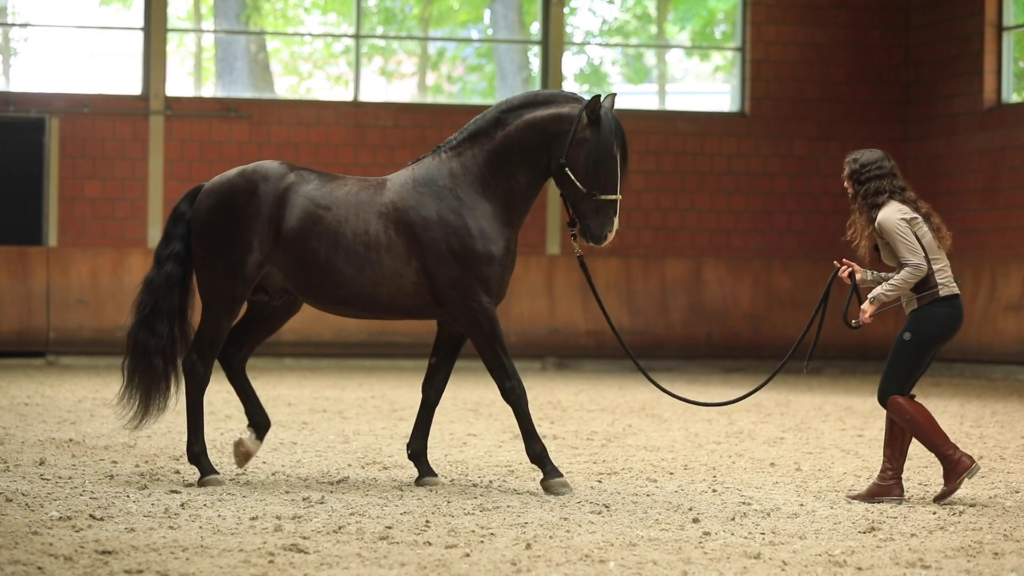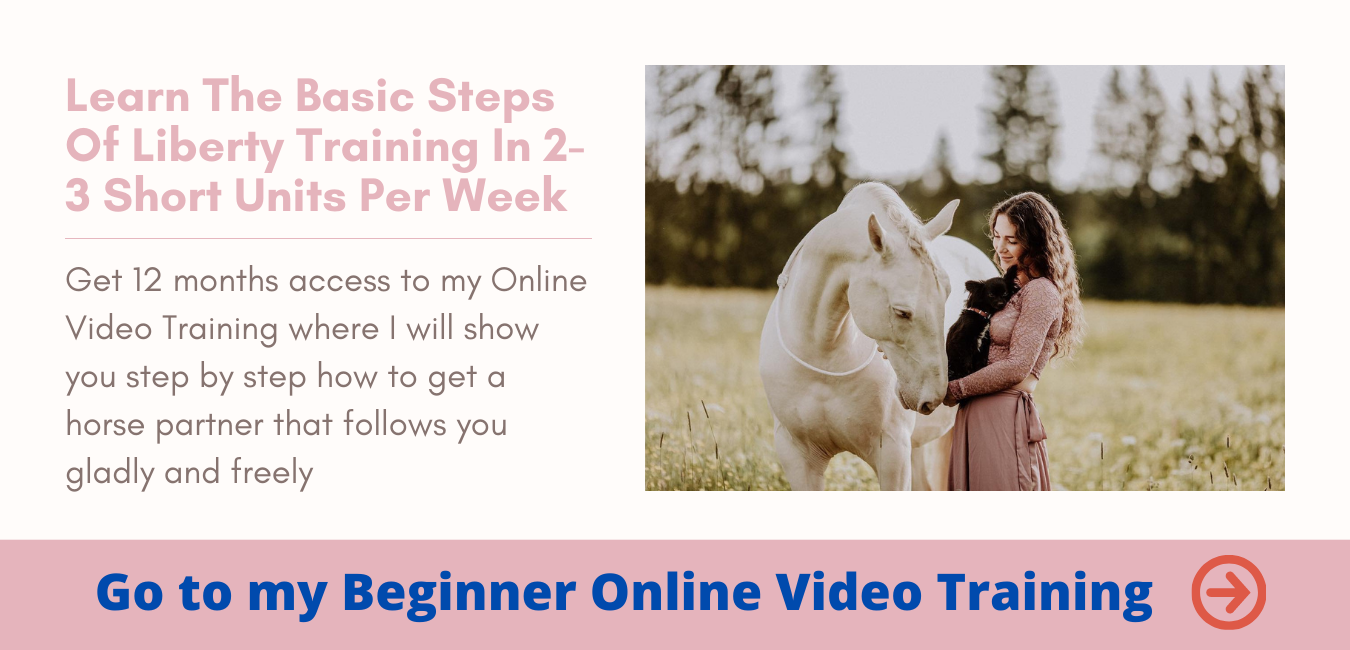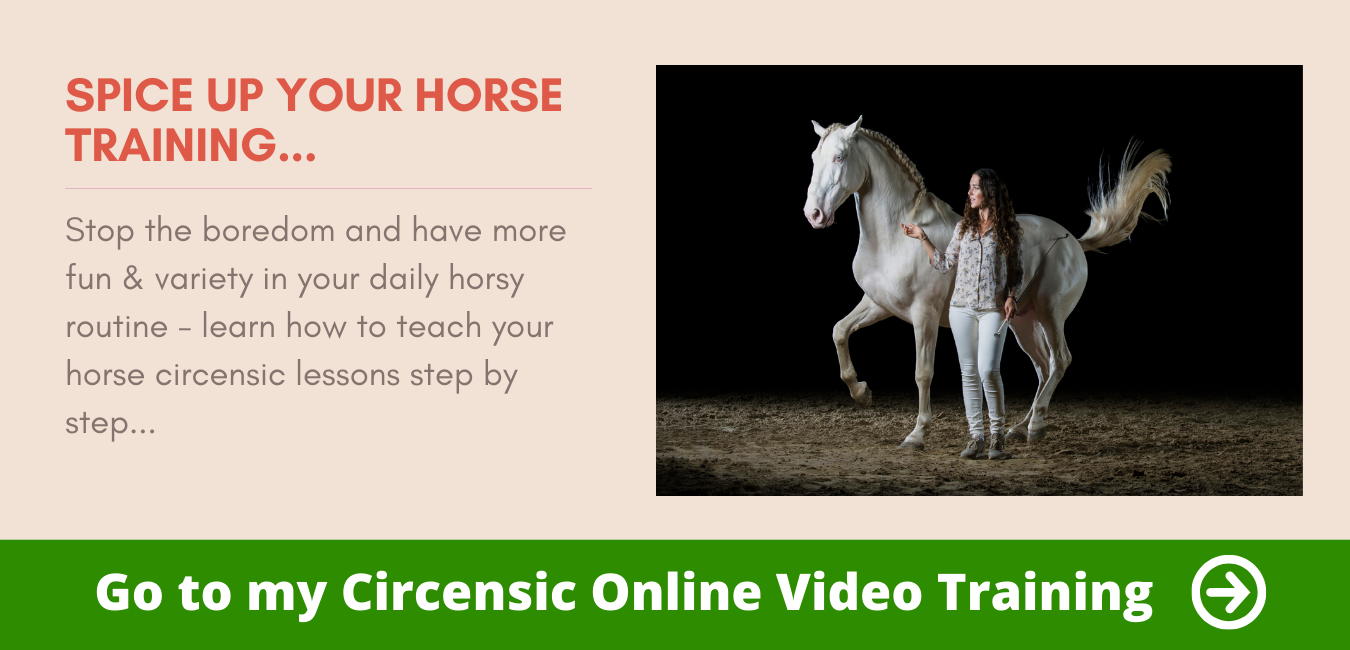Today I would like to talk to you about body language.
I got a message that this is still an area that is not easy to interpret for many people:
Because horses communicate very finely and complexly with their bodies.
We two-legged friends are not used to this kind of communication, because we rather unconsciously perceive body language and our everyday life is even often more oriented towards ignoring the contradictory body language of our fellow human beings ? Especially at work it is often so much easier to live!
During our work with our horses we should pay attention to “sharpen” our senses again.
Because only if we share every moment consciously with our horse, we can perceive the fine signals that it sends out.
Of course, this attentive contact is not necessary with every horse, as many horses have also learned to more or less ignore the body language of their humans.
But no matter if you have a very sensitive horse or not: The conscious focus on a “togetherness” will bring your training and especially the motivation of your horse to a new level.
Basic Body Language Course: For what reason do you need that?
Maybe you have already asked yourself why horses “talk with their body” at all.
This has a very useful background:
As prey animals, horses do not want to attract attention by making loud noises – and while fleeing from an attacker, it is extremely important that the herd flees in a closed and coordinated manner and that the horses do not “trip each other up”, run around or collide*.
(*Small remark: Of course our horses did not consciously decide to communicate with each other now as silently as possible – evolution has of course ensured that this form of communication had a decisive advantage and has therefore prevailed).
But how does the “system” work?
One of the most important aspects I have dedicated a large part of my attention to in my intensive online seminar:
The own dance area – and of course the dance area of the horses.
This is about the so-called “individual zone” that every horse has around him.
This is, so to speak, the area in which other, lower ranking horses (or people) are only allowed to come “by invitation” – otherwise the horse might fight back.
Maybe you know this area from yourself?
Because even you have not “allowed” to enter this “zone” – at least in most cases you do not feel very comfortable when a stranger really comes too close to you.
And these distances are really extremely important, especially for your horse.
In order to consolidate your leading position in your herd of two, your dance area should therefore consistently be YOUR area, which your horse is only allowed to enter with your permission.
And what does that have to do with body language?
If you now make yourself aware of this zone, the free work with your horse will also take on a whole new meaning.
Because yes: that is relationship work in “horse language” – because there you enter into an exchange.
Your horse has the possibility to say “no” at any time. And to show you this clearly.
But to make sure that your horse doesn’t say “no” too often and above all very clearly, it is really worth paying attention to his body language.
Because before your horse walks, he always shows this. And that gives you the possibility to act in every situation instead of just reacting.
[su_youtube url=”https://youtu.be/dY1TT5_Ke9g”]
That’s why I also like the leading position between ganache and shoulder so much!
From there I can observe the play of the ears, the chewing muscles, the mouth and the eye of my horse – and of course behave accordingly.
But do you know what a stressed horse looks like? And do you know where your horse has the limit from which it “completely shuts down” and does not want to cooperate?
With my horses I can actually see very well when I was perhaps once too clear, when they do not understand an exercise or are overtaxed.
Probably you too have learned at an early age: Ears forward means attention, ears backward means unwillingness / aggression.
But it is not quite that simple. Because there are already many differences in the inclination of the ears backwards: For example, the horse turns its ears backwards when it hears a sound there. But many horses also put their ears on when they concentrate.
Even when playing, the ears are always tilted backwards. And yes, even during aggression and fighting with the competitor, the ears are pressed flat backwards.
The ears as a mood barometer?
In order to distinguish which ear position says what, it is not enough to just look at the ears.
You must look at the horse in its entirety.
What does the mouth tell you? Are the lips firmly pressed together? And the nostrils elongated? Eyes a bit pinched? Is the muscle tone rather high and the whole horse “tense”? Then maybe your horse really has stress.
To cut a long story short: Of course it is helpful to be able to name all these signals individually. And yet, in the split second when horses often express their current mood, only the exercise helps.
Try to really “learn to see” by observing your horse in the herd.
Since my childhood, the many hours spent in the paddock have helped me to assess my horses quickly and accurately every day – and this is a big part of my success in horse training, as it allows me to quickly control and adapt my timing and my own behaviour in every situation.
Successful as a leader…
But how you become a successful leader without any bites and kicks, I would like to explain to you here ?
Fact is: Most horses do not want to be in the leading position.
They are rather happy if they can hand over responsibility and leave the “vital tasks” to a trustworthy leader.
This is much more relaxed for a horse! Especially in our world, where there are many potential dangers, which the horse is not very good at assessing.
I can only give you the advice to deal with your horse’s body language in a really differentiated way and “learn to read” it. Especially the training with very sensitive horses benefits enormously if you know the rules of behaviour within the herd.
A small example: The greeting
This begins with the fact that polite horses never actually approach each other head-on. They always approach in a slight arc towards the shoulder – and especially with a very distrustful and shy horse, this arc can make sure that it doesn’t run away from you and can be better haltered and greeted.
Always remember that horses are masters of subtle communication and can perceive every change in your movement pattern, no matter how small.
Because once upon a time their life depended on it! Horses have always been able to distinguish very precisely between predators on the prowl and relaxed and satiated trot through the tall grass.
So don’t think that your horse won’t notice when you enter the stable stressed and tense. Rather reflect at every moment how you are behaving, how you are moving and if your timing is right.
Then you will certainly make faster progress in training!
Have fun in this sense while practicing, trying out and observing!
Your Kenzie




